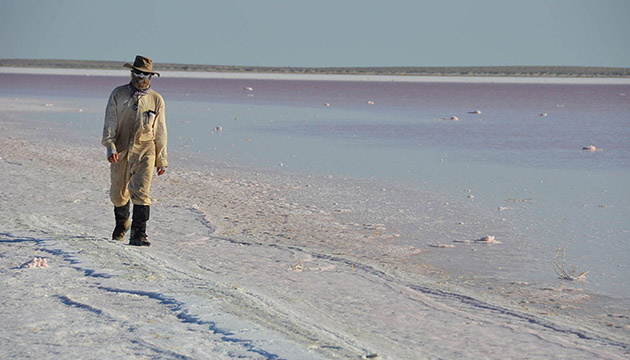Adventurer Jon Muir and friends attempt to canoe down the usually dry Cooper Creek to Lake Eyre.
Story By Suzan Muir
There's a certain romance to Australia's ephemeral rivers. Their very names – the Diamantina, the Barcoo, and the Cooper – are intertwined with pioneering folklore. They call to mind images of remoteness, adversity, mateship, triumph and disaster; of epic struggles of endurance through drought and flood; of humanity dwarfed in the enormity of a vast desert where horizons seem to stretch on forever; where one’s survival is dependent on nothing less than a deep respect for the land.
Last September, adventurer Jon Muir, his wife Suzan and friend Min Darling paddled for nine days down the Cooper Creek from Etadunna Station, SA, on the Birdsville Track towards Lake Eyre. The journey revealed a multitude of diverse communities, both past and present, which have relied on brief floods of the Cooper for their growth and life including ancient Indigenous cultures, early pastoral life, myriad birds and mammals and current station communities.
Jon has been exploring the remote wilderness all over the world for the past 35 years. He reached the summit of Mt Everest alone in 1988. He pioneered a new route to the South Pole in 1998-1999 and then, with team mate Eric Philips, he made an unsupported walk to the North Pole in 2002. His solo expeditions in Australia, however, have challenged him far more than any of these. In 2001 he made an unsupported traverse of the continent. Then, in 2007, he spent 70 days on an unsupported walk to the geographic centre of Australia (see Issue 55, pages 50–53).
Australia’s wild places, especially its deserts, have captured Jon’s heart. And the region around Lake Eyre, including the Cooper, is one of his favourite places. “It’s a clean place, of sand and wind, where my mind is free to drift,” he says. “It’s a place where there is no evidence of modern industry and business and with it our modern obsession of constant connection with other humans. I’m able to experience my place in an infinitely broader web of connection within the natural world. It allows me a necessary balance and reconnection.”
This Story is from Issue #82
Outback Magazine: June/July 2012










